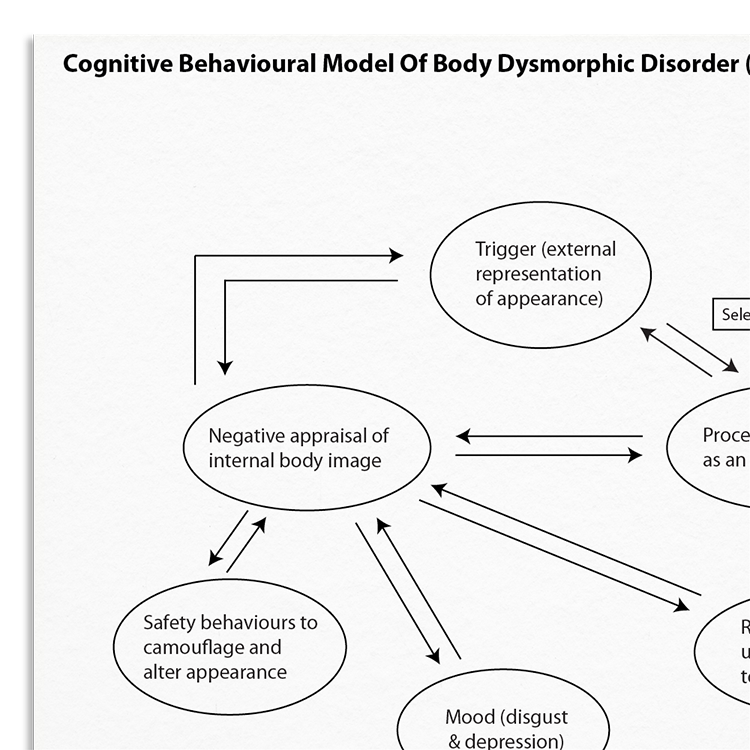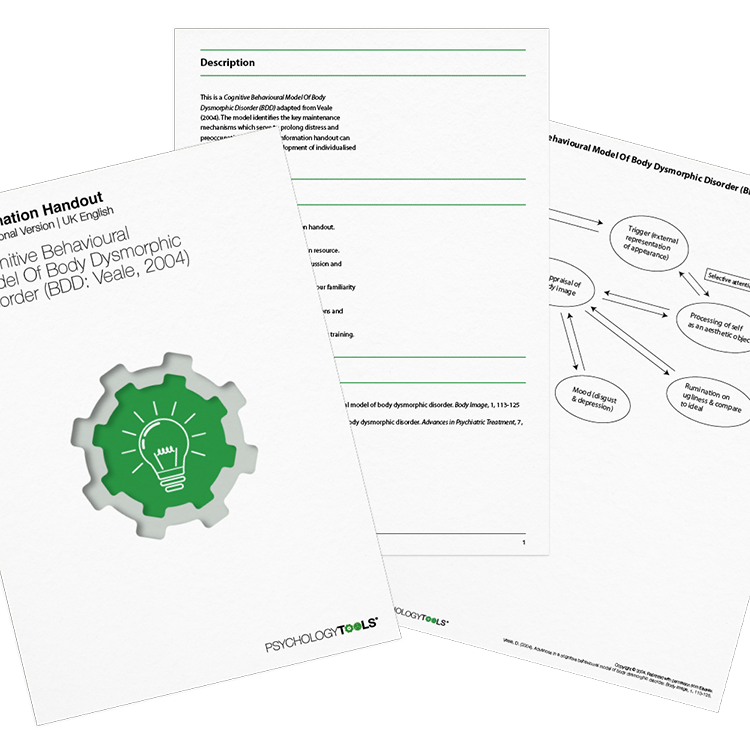Professional version
Offers theory, guidance, and prompts for mental health professionals. Downloads are in Fillable PDF format where appropriate.
A licensed copy of Veale's (2004) cognitive behavioral model of body dysmorphic disorder (BDD) which describes a framework to address key components of BDD.

Offers theory, guidance, and prompts for mental health professionals. Downloads are in Fillable PDF format where appropriate.

Body dysmorphic disorder (BDD) involves a persistent preoccupation with perceived flaws in appearance, often unnoticeable to others. This cognitive behavioral model (Veale, 2004) outlines how BDD is maintained by distorted beliefs, self-focused attention, and safety behaviors like checking and avoidance. It offers a clear framework to support formulation and treatment.
Understanding the key underpinnings of body dysmorphic disorder (BDD) is important for effective intervention. This resource helps clinicians:
Designed to help clients understand more about BDD.
Understand more about the cognitive behavioral model of body dysmorphic disorder (BDD).
Use the model as a template to organize your case formulations.
Use your knowledge of the model to explain maintenance processes to clients.
Engage clients in discussions about their beliefs and behaviors.
Customize interventions based on individual maintenance mechanisms.
Use in supervision to discuss case conceptualizations and treatment plans.
This is a cognitive model of body dysmorphic disorder (BDD) adapted from Veale (2004). The model identified key maintenance mechanisms which serve to prolong distress and preoccupation in BDD. This worksheet can be used as an aid to individualised case formulation in BDD.

Just enter your name and email address, and we'll send you Cognitive Behavioral Model Of Body Dysmorphic Disorder (BDD: Veale, 2004) (English US) straight to your inbox. You'll also receive occasional product update emails wth evidence-based tools, clinical resources, and the latest psychological research.
Working...
This site uses strictly necessary cookies to function. We do not use cookies for analytics, marketing, or tracking purposes. By clicking “OK”, you agree to the use of these essential cookies. Read our Cookie Policy